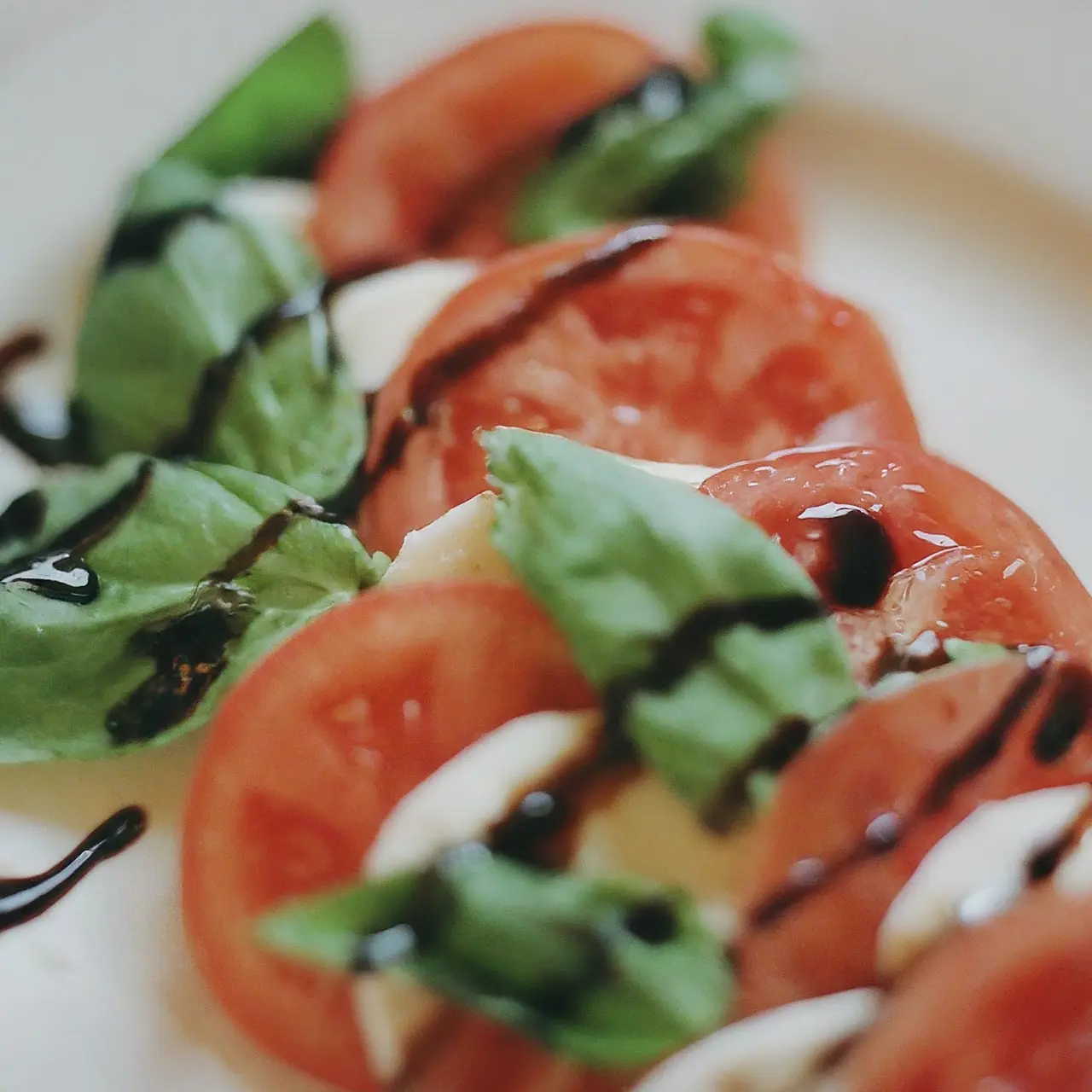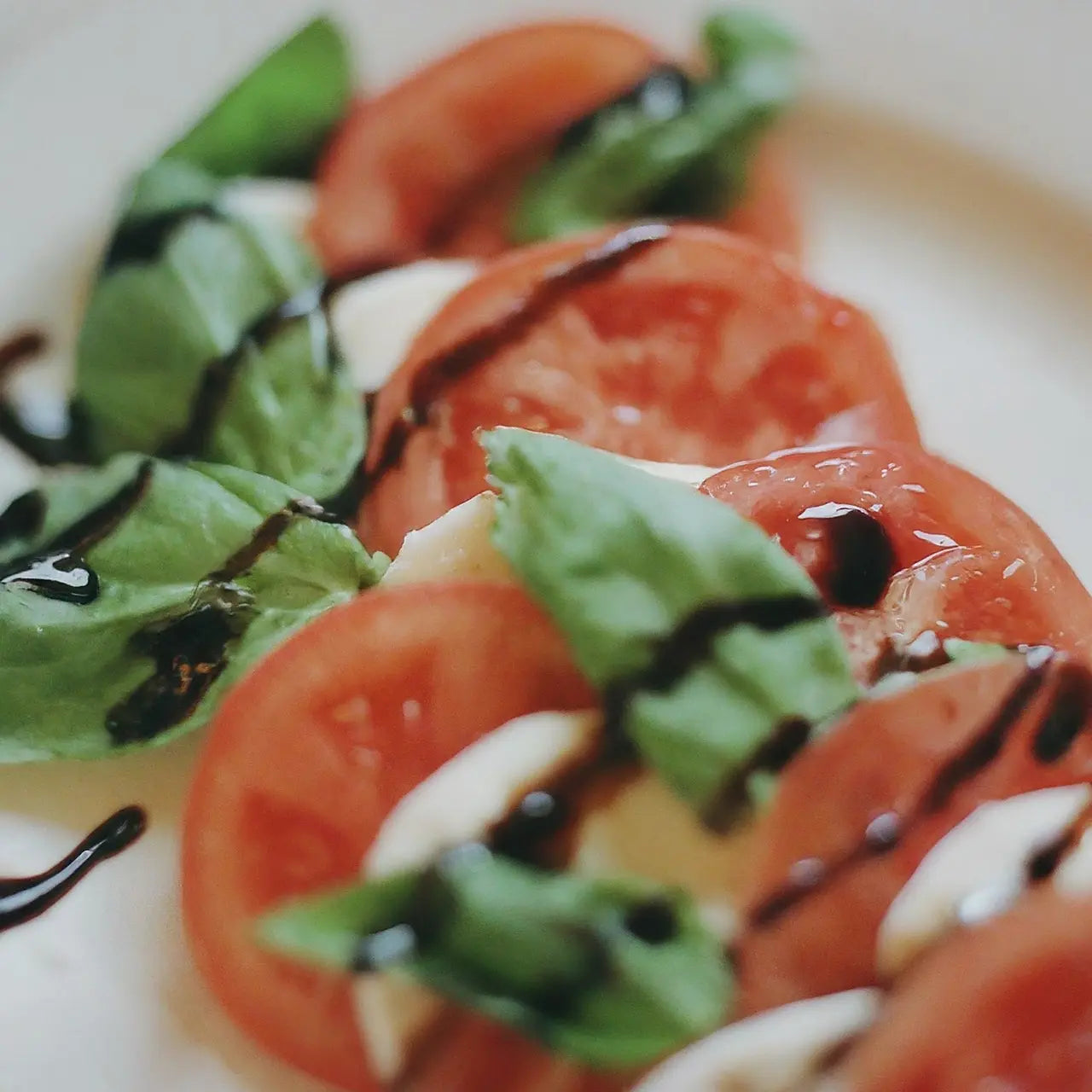Discover the transformative power of balsamic glaze in elevating the flavors of your meals. This versatile ingredient can add a touch of elegance and a burst of flavor, turning ordinary dishes into gourmet experiences.

The Basics of Balsamic Glaze
Balsamic glaze is a thick, syrup-like reduction of balsamic vinegar, which itself is a dark, concentrated, and intensely flavored vinegar originating from Italy. This glaze incorporates the sweet and tangy flavors of the original vinegar but with a more palatable intensity. Making a balsamic glaze involves simmering the vinegar until it reduces down, resulting in a consistency that deliciously coats the back of a spoon. Its unique taste is the result of this careful reduction, which concentrates the flavors and adds a touch of sweetness to the natural tartness of the vinegar.
A significant aspect of balsamic glaze is its flexibility in the culinary world. It’s not just a condiment; it’s a versatile ingredient that can seamlessly integrate into various dishes. From simple salad dressings to complex marinades, the glaze adds depth and dimension to recipes. Its application doesn’t stop at savory dishes; it’s equally compelling when drizzled over sweet treats. Understanding the basics of balsamic glaze is the first step towards transforming your dishes from good to extraordinary.
Versatility in the Kitchen
The true beauty of balsamic glaze lies in its versatility. It can illuminate a vast array of dishes, enhancing flavors with its sweet, yet tart profile. Its application spans from the simplest of dishes, such as caprese salads, to more elaborate entrees, like roasted meats and grilled vegetables. The glaze complements the fresh, vibrant flavors of tomatoes and basil in a Caprese salad while adding a refined taste to the savory notes of meat and vegetables.
Not only does balsamic glaze enhance the flavor of dishes, but it also improves their aesthetic appeal. A drizzle of this glossy glaze can transform a plate into a vibrant, appetizing masterpiece, making it a favorite among chefs aiming to impress. Its rich, dark color contrasts beautifully with a variety of foods, elevating the overall presentation. This duality of functional flavor enhancement and visual appeal makes balsamic glaze a must-have in the kitchen for both professional chefs and home cooks alike.
Enhancing Salads with a Drizzle
Salads are the canvas for creativity in the kitchen, and balsamic glaze is the perfect paint. A simple drizzle of balsamic glaze can elevate a plain green salad into a dish bursting with complexity and flavor. The glaze’s acidity cuts through the fat of olive oil-based dressings, balancing the flavors with its tartness and sweetness. Whether it’s a traditional garden salad or a more complex creation featuring fruits like strawberries and peaches, balsamic glaze adds a gourmet touch that’s hard to replicate with any other ingredient.
Transforming Entrees
When it comes to main courses, the transformative power of balsamic glaze shines brightly. It offers a quick and easy way to add a burst of flavor to entrees without overwhelming the primary ingredients. For example, a drizzle over grilled chicken breast can elevate the dish with a balance of sweetness and acidity. Similarly, incorporating balsamic glaze into a reduction sauce for steak or pork tenderloin creates a depth of flavor that perfectly complements the richness of the meat. The glaze serves not only as a finishing touch but also as an integral component that brings out the best in every bite.
A Sweet Touch to Desserts
Balsamic glaze isn’t confined to savory dishes; its sweetness provides an unexpected but delightful enhancement to many desserts. Drizzling it over vanilla ice cream, for instance, introduces a complex flavor profile that contrasts the creaminess of the ice cream superbly. Similarly, fresh fruits like berries or figs become exquisite desserts with just a touch of balsamic glaze, accentuating their natural sweetness and adding a level of sophistication. This unconventional use of balsamic glaze in desserts is a testament to its versatility and the endless possibilities it presents in culinary arts.
DIY Balsamic Glaze Recipe
Creating your balsamic glaze at home is simpler than you might think. Begin with high-quality balsamic vinegar for the best results. Pour one cup of vinegar into a small saucepan, and bring it to a gentle simmer over medium heat. Allow the vinegar to reduce by half, which typically takes about 20 minutes, stirring occasionally to prevent burning. As it cools, the glaze will thicken further. For an extra touch of sweetness, consider adding a teaspoon of honey during the reduction process. This homemade balsamic glaze can be stored in an airtight container in the refrigerator, ready to enhance your dishes on a whim.
Pairing Ideas & Tips
The journey into the world of balsamic glaze is one of endless discovery and enjoyment. For cheeses, try pairing the glaze with creamy varieties like burrata or mozzarella to highlight their texture and taste. In terms of protein, balsamic glaze finds its perfect match in chicken and pork, providing a tantalizing contrast to their flavors. And when it comes to vegetables, don’t hesitate to experiment. The natural sweetness of roasted root vegetables and the char of grilled veggies are both enhanced by a final drizzle of balsamic glaze. Embarking on this delicious exploration will no doubt reveal the unparalleled versatility of balsamic glaze in elevating everyday meals into extraordinary culinary creations.
Unlocking Culinary Magic with Balsamic Glaze
Incorporating balsamic glaze into your cooking repertoire can dramatically elevate the taste and presentation of your meals. Whether drizzled over salads, meats, or desserts, its rich, complex flavor enhances the overall dining experience, making every bite memorable. Start experimenting with balsamic glaze today and unlock a world of culinary possibilities.






